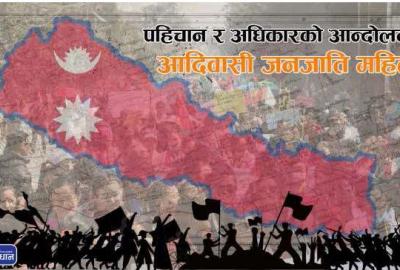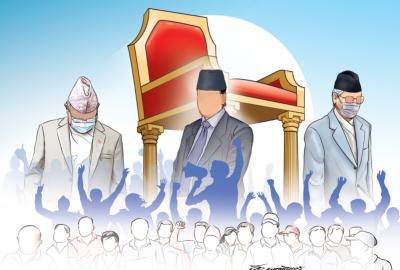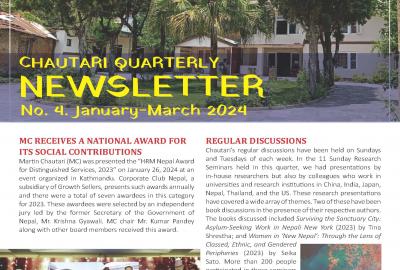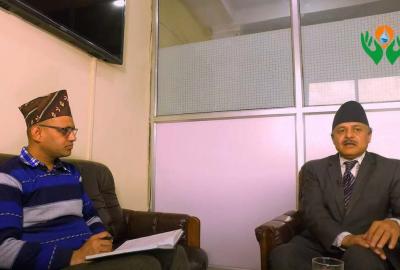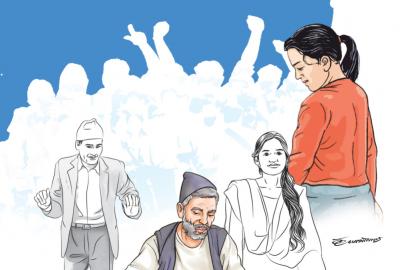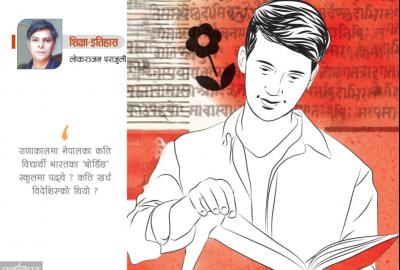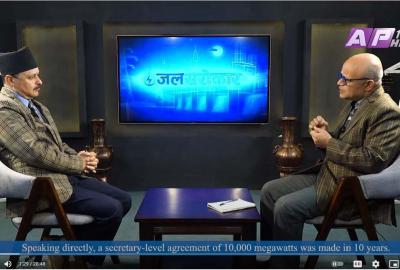No medium, no message
2021-10-11Reviewed by Monica Upadhyay monica@kantipur.com.np
The Royal Government formed in the country after the February one putsch has topped the list of the nations repressing press freedom. In a round- up release published by the Reporter's Sans Frontier in 2005, Nepal superceded Pakistan, Cuba, China and North Korea. Since the February 1st declaration of the state of emergency, the Royal regime has taken draconian measures, including detention of journalists, seizure of FM equipment at midnight, and security raids on many FM stations. Before Feb 1, Nepal had a total of 47 FM radio stations, which was the highest number of such community broadcasting system in the entire south Asian region. The royal coup left up to 2,500 radio journalists unemployed and some FM stations on the brink of bankruptcy. The critical situation that the FM stations had to face after the political change of February 1 is what Binod Dhungel takes up in his essay, The Fate of Fm rodios post Feb 1 ''His article is a choking reminder of the time when the government shut the airing of Sagarmatha FM for forty-eight hours and snatched the up-linking equipment of Kantipur FM. detained dozens of journalists and raided a number of newspaper offices published from outside the capital city of kathmandu. The histry of radio journalism in Nepal is fairly recent. But it has seen many vicissitudes. A decade ago, it was Radio Nepal, then operating under the name of Nepal Radio, which enjoyed a monopoly in desseminarion news, views, previews and reviews. Gradually, there was the mushrooming of the FM radio that calered to the entertainment as well as infotmational needs of the people. Martin Chautari's Radio journalism: News and Dialogue is rich in informaent of the decade-old FM radio journalism collected by media professionals and experts, including Dhungel. The book propounds the idea that no forms of media can remain unaffected by the legal and political environment of the country. In two of his essaya, Devraj Humagain has brilliantly analyzed the legal and political environment that has influenced the conditions for the production of bulletins and news-related programs at FM radio stations.
Similarly, Shreeram Paudel of Kantipur FM and Ghamaraj Luitel of Saharmatha FM have contributed two lively articles in which they have humorously played with the constraints and difficulties in news production. Also, there are elaborate chapters that provide information about the way news is "played ''between reporters and editors before it is broadcast, how organizatioal constrainst influence news production and how personal prejudice of news producers migh influence the news. To sum up, the book projects the idea that post February 1 has made radio journalism suffer more than the press. In terms of information dissemination, the loss of indepedent radio news in a country wheree newspaper readership is limited is perhaps a bigger blow. The present government must realize that the radio has played a major role in keeping the pubile informed about the violent insurgency, including individual killing, torture of civlians, bombing of schools cxtortion bombing of schools and human rights abuses. At this critical juncture, the permission to Royal Nepalese Army (RNA) to operate 10 mobile FM stations is farcical. Although the RNA's bid to run mobile FM stations is to copete with the Maoist run mobile FM radios, operation of such stations will convey the message thet RNA is indeed a tool of the autocratic regime. Is it not high time that the RNA stopped following the Maoists footsted believing in the credibility of the private and community run FM stations rather than to waste money in operating new FM stations?
Source: The Kathmandu Post, March 12, 2006 p. 4
